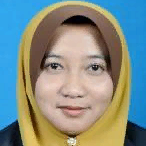International Journal of Education and Management Engineering (IJEME)
IJEME Vol. 8, No. 6, 8 Nov. 2018
Cover page and Table of Contents: PDF (size: 276KB)
Physical and Soft Sensor Technologies for Wastewater Quality Management
Full Text (PDF, 276KB), PP.1-14
Views: 0 Downloads: 0
Author(s)
Index Terms
Wastewater quality, physical sensor, soft sensor, treatment plant, selectivity, sensitivity
Abstract
Physical sensors are used mostly to detect sludge and odour in wastewater. Black box modelling or data-derived model using the correlation of input-output parameters is the preferred method as we have assessed. This is due to the non-complex approach of such models as opposed to model-driven, mechanistic models. The latter is hard to be adopted for soft-sensor development due to the inherent complexities and uncertainties. The commonest methods for soft sensor model development are ANN and ANFIS. Many other improvements of these methods are achieved by combining with other techniques to enhance the prediction performance of the soft sensors. Accuracy and precision of data collected for soft sensor modelling has become a vital concern at present to ensure the reliability of wastewater quality indices predicted by the soft sensors. Reduction of the level of reliability of the sensor system in monitoring and controlling of WWTPs would lead to serious lapses in the wastewater quality management. In this backdrop we recommend SEVA soft sensor as one of the best potential solutions which could be offered by the existing technologies.
Cite This Paper
Nor Hana Mamat, Saliza Ramli, Nor Arymaswati Abdullah, Samia Khan, Chandima Gomes,"Physical and Soft Sensor Technologies for Wastewater Quality Management", International Journal of Education and Management Engineering(IJEME), Vol.8, No.6, pp.1-14, 2018. DOI: 10.5815/ijeme.2018.06.01
Reference
[1]Ł. Guz, G. Łagód, K. Jaromin-Gleń, Z. Suchorab, H. Sobczuk, and A. Bieganowski, “Application of gas sensor arrays in assessment of wastewater purification effects,” Sensors (Switzerland), vol. 15, no. 1, pp. 1–21, 2015.
[2]P. A. Vanrolleghem and D. S. Lee, “On-line monitoring equipment for wastewater treatment processes: State of the art,” Water Sci. Technol., vol. 47, no. 2, pp. 1–34, 2003.
[3]N. A. Abdullah, S. Ramli, N. H. Mamat, S. Khan, and C. Gomes, “Chemical And Biosensor Technologies for Wastewater Quality Management,” Int. J. Adv. Res. Publ., vol. 1, no. 6, pp. 1–10, 2017.
[4]A. R. Dahiru, N. B. Nordin, M. N. Ishak, M. S. B. Mislan, and C. Gomes, “Chemical Method for Wastewater Management: Developments of Fenton Process,” Int. J. Adv. Res. Publ., vol. 1, no. 3, pp. 123–137, 2017.
[5]B. Petrie, R. Barden, and B. Kasprzyk-Hordern, “A review on emerging contaminants in wastewaters and the environment: Current knowledge, understudied areas and recommendations for future monitoring,” Water Res., vol. 72, no. 0, pp. 3–27, 2015.
[6]S. C. Anijiofor, N. A. M. Jamil, S. Jabbar, S. Sakyat, and C. Gomes, “Aerobic and Anaerobic Sewage Biodegradable Processes : The Gap Analysis Aerobic and Anaerobic Sewage Biodegradable Processes : The Gap Analysis,” Int. J. Res. Environ. Sci., vol. 3, no. 3, pp. 9–19, 2017.
[7]F. C. Silva, M. A. S. Martins, L. Bilro, R. N. Nogueira, I. Capela, and J. J. Keizer, “Optical Fiber Technology for Monitoring and Preventing Biomass Washout from Bioreactors: A Case Study with a Sequencing Batch Reactor (SBR),” Water. Air. Soil Pollut., vol. 226, no. 176, pp. 1–11, 2015.
[8]N. Paoprasert, S. Srisawadi, J. Munnae, V. Champeeratana, and N. Techapreechawong, “Optimization of the rubber coagulation process for wastewater treatment in latex separator disc cleaning system,” in 2015 IEEE International Conference on Industrial Engineering and Engineering Management (IEEM), 2015, pp. 1347–1351.
[9]P. M. Yeole and M. R. Wakchaure, “Use Of Kevlar Fabric To Enhance Flexural Strength Of RC Beams,” Int. J. Eng. Res. Technol., vol. 2, no. 6, pp. 2250–2257, 2013.
[10]R. K. Henderson, A. Baker, K. R. Murphy, A. Hambly, R. M. Stuetz, and S. J. Khan, “Fluorescence as a potential monitoring tool for recycled water systems : A review,” Water Res., vol. 43, no. 4, pp. 863–881, 2009.
[11]B. Chen and P. Westerhoff, “Predicting disinfection by-product formation potential in water,” Water Res., vol. 44, no. 13, pp. 3755–3762, 2010.
[12]L. Yang, D. Kim, H. Uzun, T. Karanfi, and J. Hur, “Assessing trihalomethanes (THMs) and N-nitrosodimethylamine (NDMA) formation potentials in drinking water treatment plants using fluorescence spectroscopy and parallel factor analysis,” Chemosphere, vol. 121, pp. 84–91, 2015.
[13]S. K. L. Ishii and T. H. Boyer, “Behavior of reoccurring parafac components in fluorescent dissolved organic matter in natural and engineered systems: A critical review,” Environ. Sci. Technol., vol. 46, no. 4, pp. 2006–2017, 2012.
[14]W. Li et al., “Developing LED UV fluorescence sensors for online monitoring DOM and predicting DBPs formation potential during water treatment,” Water Res., vol. 93, pp. 1–9, 2016.
[15]W. T. Li et al., “Application of portable online LED UV fluorescence sensor to predict the degradation of dissolved organic matter and trace organic contaminants during ozonation,” Water Res., vol. 101, pp. 262–271, 2016.
[16]H. Honggui, L. Ying, and Q. Junfei, “A fuzzy neural network approach for online fault detection in waste water treatment process,” Comput. Electr. Eng., vol. 40, no. 7, pp. 2216–2226, 2014.
[17]G. Min, G. Ya-nan, and H. Hong-gui, “A SVI soft sensor model based on improved PSO-Elman neural network,” in Proceeding of the 11th World Congress on Intelligent Control and Automation, 2014, pp. 3545–3550.
[18]A. W. Alattabi, C. Harris, R. Alkhaddar, A. Alzeyadi, and K. Hashim, “Treatment of Residential Complexes’ Wastewater using Environmentally Friendly Technology,” Procedia Eng., vol. 196, no. June, pp. 792–799, 2017.
[19]M. Hijosa-Valsero, R. Molina, A. Montràs, M. Müller, and J. M. Bayona, “Decontamination of waterborne chemical pollutants by using atmospheric pressure nonthermal plasma: a review,” Environ. Technol. Rev., vol. 3, no. 1, pp. 71–91, 2014.
[20]M. Hołub, R. Brandenburg, H. Grosch, S. Weinmann, and B. Hansel, “Plasma supported odour removal from waste air in water treatment plants: An industrial case study,” Aerosol Air Qual. Res., vol. 14, no. 3, pp. 697–707, 2014.
[21]M. Mulder, D. Antakyali, and S. Ante, “Costs of Removal of Micropollutants from Effluents of Municipal Wastewater Treatment Plants - General Cost Estimates for the Netherlands based on Implemented Full Scale Post Treatments of Effluents of Wastewater Treatment Plants in Germany and Switzerland,” 2015.
[22]M. Lepot et al., “Calibration of UV/Vis spectrophotometers: A review and comparison of different methods to estimate TSS and total and dissolved COD concentrations in sewers, WWTPs and rivers,” Water Res., vol. 101, pp. 519–534, 2016.
[23]P. Giungato et al., “Improving recognition of odors in a waste management plant by using electronic noses with different technologies, gas chromatography-mass spectrometry/olfactometry and dynamic olfactometry,” J. Clean. Prod., vol. 133, pp. 1395–1402, 2016.
[24]L. Åmand, G. Olsson, and B. Carlsson, “Aeration control - A review,” Water Sci. Technol., vol. 67, no. 11, pp. 2374–2398, 2013.
[25]H. Haimi, M. Mulas, F. Corona, and R. Vahala, “Data-derived soft-sensors for biological wastewater treatment plants: An overview,” Environ. Model. Softw., vol. 47, pp. 88–107, 2013.
[26]B. Ráduly, K. V. Gernaey, A. G. Capodaglio, P. S. Mikkelsen, and M. Henze, “Artificial neural networks for rapid WWTP performance evaluation: Methodology and case study,” Environ. Model. Softw., vol. 22, no. 8, pp. 1208–1216, 2007.
[27]F. S. Mjalli, S. Al-Asheh, and H. E. Alfadala, “Use of artificial neural network black-box modeling for the prediction of wastewater treatment plants performance,” J. Environ. Manage., vol. 83, no. 3, pp. 329–338, 2007.
[28]E. Molga, R. Cherbański, and L. Szpyrkowicz, “Modeling of an industrial full-scale plant for biological treatment of textile wastewaters: Application of neural networks,” Ind. Eng. Chem. Res., vol. 45, no. 3, pp. 1039–1046, 2006.
[29]M. W. Lee, S. H. Hong, H. Choi, J.-H. Kim, D. S. Lee, and J. M. Park, “Real-time remote monitoring of small-scaled biological wastewater treatment plants by a multivariate statistical process control and neural network-based software sensors,” Process Biochem., vol. 43, no. 10, pp. 1107–1113, 2008.
[30]L. I. L. Fanjun, Q. Junfei, and Z. Wei, “A fast growing cascade neural network for BOD estimation,” in Proceedings of the 34th Chinese Control Conference, 2015, pp. 3417–3422.
[31]S. Heddam, H. Lamda, and S. Filali, “Predicting Effluent Biochemical Oxygen Demand in a Wastewater Treatment Plant Using Generalized Regression Neural Network Based Approach: A Comparative Study,” Environ. Process., vol. 3, no. 1, pp. 153–165, 2016.
[32]J. Fernandez de Canete, P. Del Saz-Orozco, R. Baratti, M. Mulas, A. Ruano, and A. Garcia-Cerezo, “Soft-sensing estimation of plant effluent concentrations in a biological wastewater treatment plant using an optimal neural network,” Expert Syst. Appl., vol. 63, pp. 8–19, 2016.
[33]Y. Qiu, Y. Liu, and D. Huang, “Date-driven soft-sensor design for biological wastewater treatment using deep neural networks and genetic algorithms,” J. Chem. Eng. Japan, vol. 49, no. 10, pp. 925–936, 2016.
[34]T. Y. Pai et al., “Using fuzzy inference system to improve neural network for predicting hospital wastewater treatment plant effluent,” Comput. Chem. Eng., vol. 33, no. 7, pp. 1272–1278, 2009.
[35]G. Civelekoglu, A. Perendeci, N. O. Yigit, and M. Kitis, “Modeling carbon and nitrogen removal in an industrial wastewater treatment plant using an adaptive network-based fuzzy inference system,” Clean - Soil, Air, Water, vol. 35, no. 6, pp. 617–625, 2007.
[36]G. Civelekoglu, N. O. Yigit, E. Diamadopoulos, and M. Kitis, “Modelling of COD removal in a biological wastewater treatment plant using adaptive neuro-fuzzy inference system and artificial neural network,” Water Sci. Technol., vol. 60, no. 6, pp. 1475–1487, 2009.
[37]H. Mingzhi, Y. Ma, W. Jinquan, and W. Yan, “Simulation of a paper mill wastewater treatment using a fuzzy neural network,” Expert Syst. Appl., vol. 36, no. 3 PART 1, pp. 5064–5070, 2009.
[38]M. Huang, Y. Ma, J. Wan, and X. Chen, “A sensor-software based on a genetic algorithm-based neural fuzzy system for modeling and simulating a wastewater treatment process,” Appl. Soft Comput. J., vol. 27, pp. 1–10, 2015.
[39]H. Liu, M. Huang, and C. Yoo, “A fuzzy neural network-based soft sensor for modeling nutrient removal mechanism in a full-scale wastewater treatment system,” Desalin. Water Treat., vol. 51, no. 31–33, pp. 6184–6193, 2013.
[40]S. S. Chong, a. R. Abdul Aziz, S. W. Harun, H. Arof, and S. Shamshirband, “Application of multiple linear regression, central composite design, and ANFIS models in dye concentration measurement and prediction using plastic optical fiber sensor,” Measurement, vol. 74, pp. 78–86, 2015.
[41]J. Wan et al., “Prediction of effluent quality of a paper mill wastewater treatment using an adaptive network-based fuzzy inference system,” Appl. Soft Comput., vol. 11, no. 3, pp. 3238–3246, 2011.
[42]Y. Liu, J. Chen, Z. Sun, Y. Li, and D. Huang, “A probabilistic self-validating soft-sensor with application to wastewater treatment,” Comput. Chem. Eng., vol. 71, pp. 263–280, 2014.
[43]L. Yiqi, H. Daoping, and L. Zhifu, “A SEVA soft sensor method based on self-calibration model and uncertainty description algorithm,” Chemom. Intell. Lab. Syst., vol. 126, pp. 38–49, 2013.
[44]M. Mulas, F. Corona, H. Haimi, L. Sundell, M. Heinonen, and R. Vahala, “Nitrate estimation in the denitrifying post-filtration unit of a municipal wastewater treatment plant: the Viikinmaki case,” Water Sci. Technol., vol. 65, no. 8, pp. 1521–1529, 2012.
[45]F. Corona, M. Mulas, H. Haimi, L. Sundell, M. Heinonen, and R. Vahala, “Monitoring nitrate concentrations in the denitrifying post-filtration unit of a municipal wastewater treatment plant,” J. Process Control, vol. 23, no. 2, pp. 158–170, 2013.
[46]H. Haimi, F. Corona, M. Mulas, L. Sundell, M. Heinonen, and R. Vahala, “Shall we use hardware sensor measurements or soft-sensor estimates? Case study in a full-scale WWTP,” Environ. Model. Softw., vol. 72, pp. 215–229, 2015.




